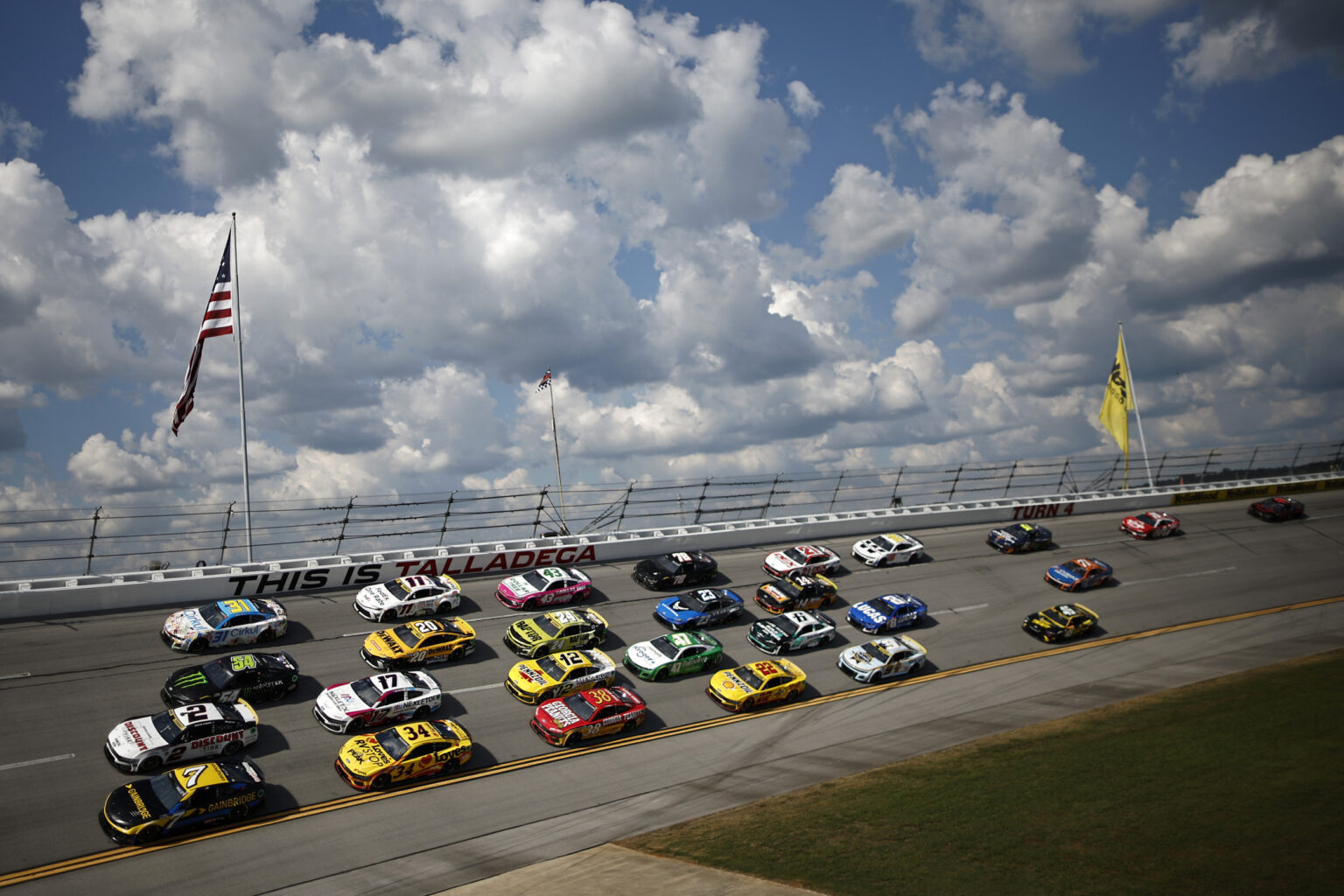NASCAR officials have confirmed that the Damaged Vehicle Policy (DVP) procedures established during the NASCAR Cup Series 2024 season will continue without alteration.
This announcement follows a meeting with Cup Series crew chiefs, aiming to ensure clarity and consistency around the policy’s implementation, especially after the intense backlash following the huge 28-car Talladega Superspeedway crash.
The DVP clarification revolves around vehicles suffering flat tires that could potentially continue racing. Vehicles that are incapacitated and cannot make it back to their pit stalls due to flat tires will now be towed for repairs. Teams are then given a precise seven-minute window to change tires and repair damages, a guideline drawn from experiences during Talladega race. This approach is intended to reduce any inconsistencies in policy application, which had been a point of contention in prior races.
A critical incident that revealed the need for such clarification occurred on September 29 at Kansas Speedway. During that event, Josh Berry’s No. 4 Ford was eliminated from competition following a minor collision just one lap into the race. Despite minimal damages, NASCAR officials disqualified Berry’s vehicle based on the prevailing guidelines, resulting in premature termination of his participation due to a failure to meet the towing criteria. This rigid application of the DVP prompted discussions about the necessity for a more transparent, fair approach.
The Talladega Superspeedway incident exhibited the potential ripple effects of the DVP on the postseason standings. A massive 28-car wreck near the race’s end left many cars severely damaged with flat tires. However, unlike Berry’s experience in Kansas, key playoff contenders Chase Elliott and Chase Briscoe were allowed to have their vehicles towed to pit stalls for necessary repairs, enabling them to continue the race. This discrepancy provoked debates within the community about the policy’s fair implementation and whether similar considerations should have been applied universally.
NASCAR’s Senior Vice President of Competition, Elton Sawyer, acknowledged the complexities inherent in the DVP’s interpretation. In hindsight, Sawyer suggested that decisions made at Talladega might have varied had circumstances been evaluated differently at the time. The policy’s execution, especially in high-pressure situations like play-off races, remains a challenging yet crucial component of maintaining race integrity and competitiveness.
Acknowledging the feedback from teams, NASCAR has pledged to conduct a thorough review of the DVP following the season’s conclusion. NASCAR’s Senior Vice President of Competition, Elton Sawyer, confirmed the off-season review whilst speaking to the media following the Talladega race. He explained, as previously reported by Newsweek Sports:
“On the heels of last week at Kansas, our goal was never to put good cars out of the race.
“Last week, as we got looking at that and digesting it, maybe we should’ve made a different call last week. As we went into Talladega, we wanted to make sure we aired on the side of the competitors,” he said.
“We didn’t anticipate seeing 25 cars down there, some of them in the grass, high-sided, weren’t sure why they couldn’t continue. That’s why we made the decision to tow the No. 2 to pit road. The No. 9 and No. 14 both met minimum speed, so we felt like that was the right call at that time.
“We will take a much deeper dive into this in the offseason. (The) DVP has been challenging, and we’ll go to work on that in the offseason.”
Read the full article here

